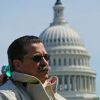This is the first of a two-part series examining how the fire service can emulate the military’s leadership development blueprint.
When it comes to leading people in just about all types of situations, the U.S. military seems to have a corner on the market.
According to the Molossian Naval Academy, leadership is “the process of influencing others to accomplish the mission by providing purpose, direction, and motivation. Command is the authority a person in the military service lawfully exercises over subordinates by virtue of his rank and assignment or position.”
The military services are among the best at consistently identifying and developing great leaders at all levels of supervision. Being able to learning from their leadership selection and development process is just one of the added benefits of closely watching what they do.
Let’s face it, the fire and rescue service and the military are in public safety business. Both services, in their own way, protect life and property from all types of harm.
Former U.S. Rep Curt Weldon (R-Pa.) said it best. Paraphrasing his words, the military is our international defenders and the fire-rescue service is America’s domestic defenders. Understanding that our mission is similar to that of the U.S. military, taking a close look at their leadership training and preparation process just makes good sense.
Early identification
Military leadership indoctrination starts at the high school level. A youngster considering a military career can enter the Junior Reserve Officer Training Corps.
If this is a good fit for that person, they can advance to the college level ROTC program or enter one of the four military academies: Army, Navy (Marines), Air Force or Coast Guard. Once the person has completed the military academy or university ROTC program, they are commissioned as an officer.
Along with the general academy focus and physical fitness, the military officer candidate must demonstrate personal leadership acumen throughout their college program.
Some will point out that many fire departments operate explore scout or other junior firefighter programs. And of course, we have the National Fire Academy Executive Officer Program.
Yet the leadership, academic and physical fitness rigor is not on the same scale, not by any stretch of the imagination.
Personal responsibility
Once a person is accepted as a commissioned officer in the military, they’re obligated to continue their education, personal fitness and leadership growth until retirement or separation from the service. The success or failure of a solider, sailor, airman or marine career is squarely placed on their shoulders with significant organizational support.
Each is empowered and encourage to “be all that they can be” with in their service branch. There are ample opportunities for individual growth and advancement within their service.
Two particular areas of leadership development that the fire rescue service should adopt at a national level are the “pass over rule” and “up or out.” We’ll explore more about both programs next month.
In the fire service, the leadership preparation and promotional selection systems seems to run the gamut.
Some departments place a premium on developing their members’ leadership potential. While other organizations don’t seem to see the need for or benefit of spending any energy or resources to develop and identify their current or future leaders.
Officer development and selection is one area that we should have clearly developed and implemented by now, nationally. We need a consistent and effective process to develop fire-service leaders for all of our organizations. Perhaps we should learn more about and closely model the comprehensive military leadership training programs within the fire service.
There are many barriers preventing a required national leadership development focus. However, if it’s important, it could happen.
It is very interesting that “the need for high education in the fire service” was identified at the Wingspread I Conference held in 1966. Each one of the following conferences have discussed this topic as a significant national need. I am projecting that Wingspread VI (the 50th anniversary) will point out the same concern.



